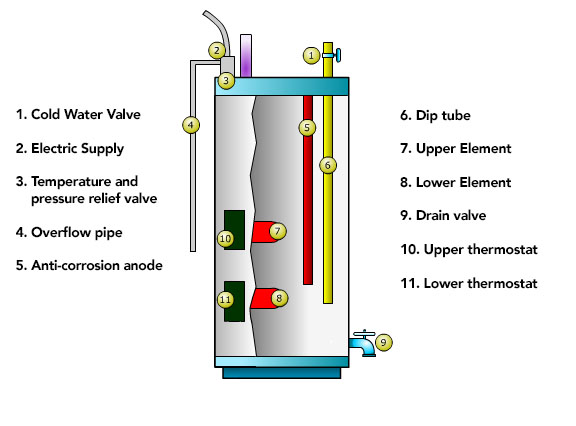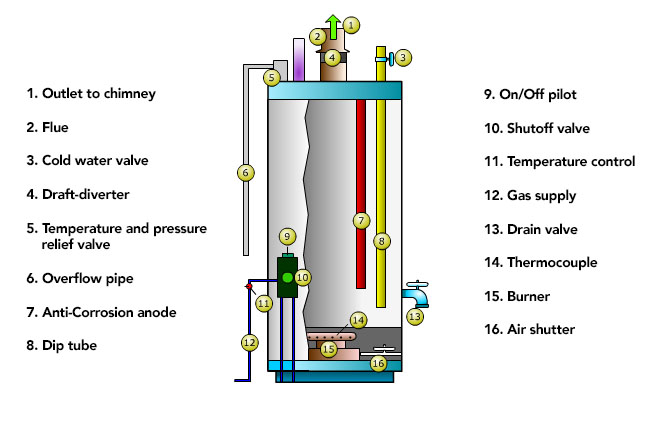There are several types of water heaters that are available on the market:
- Storage or tank
- On demand
- Heat pump
- Tankless coil
- Indirect
- Solar
However, most water heaters use a storage tank type.
Storage or tank-type water heaters are relatively simple devices and by far the most common type of residential water heater used in the United States. They range in size from 20 to 80 gallons, and can be fueled by electricity, natural gas, propane, or oil.
Parts of an Electric Hot Water Heater

Parts of a Gas Hot Water Heater

How a Gas Hot Water Heater Works
When you turn on a hot water faucet or use hot water in a dishwasher or clothes washer, water pipes draw hot water from the tank. To replace that hot water, cold water enters the bottom of the tank, ensuring that the tank is always full. Depending on the type of fuel that is used, either electrical heating elements or a natural gas burner is used to heat the water.
Click the “play” button on the animation below to see how a gas hot water heater works.
Text description of the How a Gas Hot Water Heater Works animation.
First, cold water flows in from the cold inlet tube into the bottom of the tank. A gas burner underneath the tank then heats the water to the desired temperature. The hot water exits through the warm outlet tube at the top to be distributed through the house, while the exhaust from the gas burner escapes through the chimney in the center of the tank.
Electric water heaters are generally less expensive to install (purchase price) than gas-fired types because they don't require gas lines and vents to let the combustion products out of the house. In previous lessons, and in Home Activity 2, we have seen that natural gas costs about 7–12 dollars per million BTUs, whereas electrical energy is 20–25 dollars per million BTUs, making electric water heaters more expensive to operate.
Storage tank-type water heaters raise and maintain the water temperature to the temperature setting on the tank (usually between 120°–140°F). Because the water is constantly heated and kept ready for use in the tank, heat energy can be lost even when no faucet is on. This is called standby heat loss. These standby losses represent 10 to 20 percent of a household's annual water heating costs. Newer, more energy-efficient storage models can significantly reduce the amount of standby heat loss, making them much less expensive to operate.